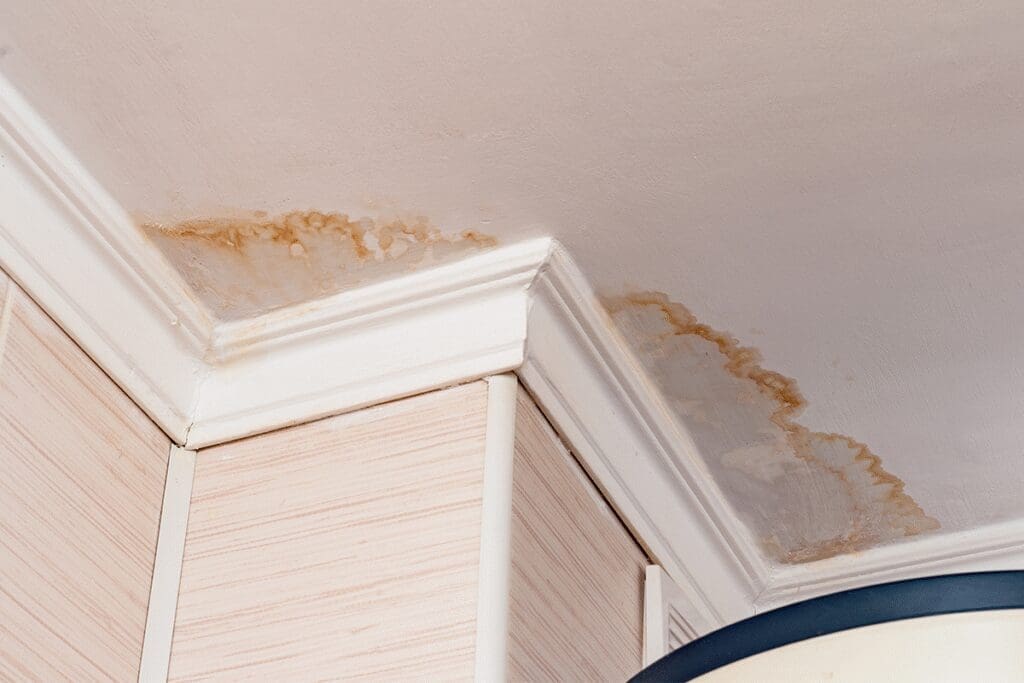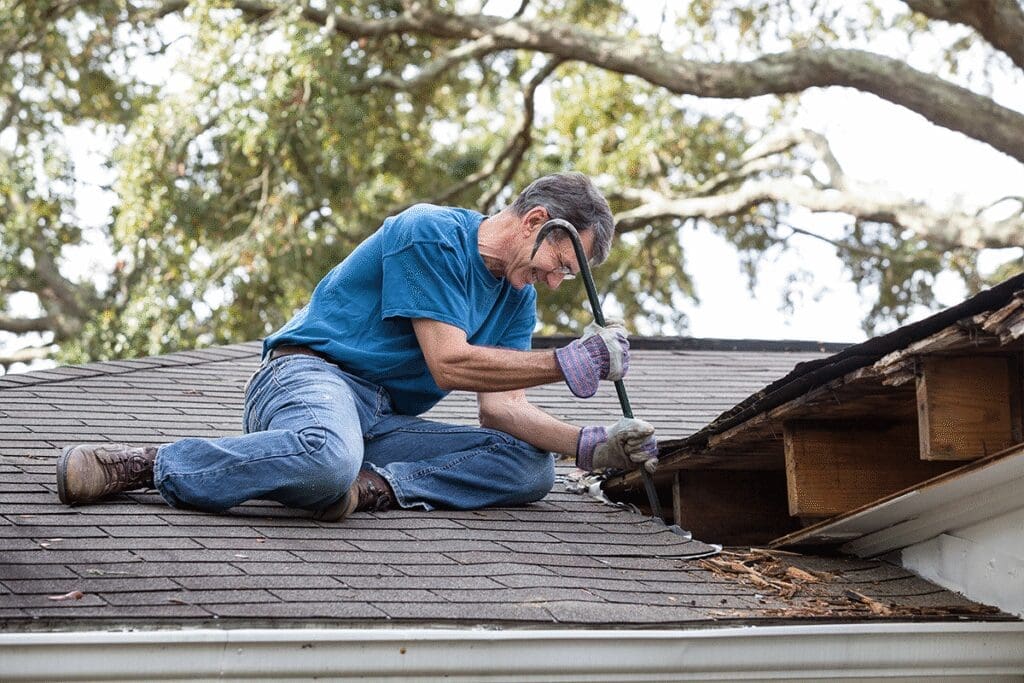Step 1: Finding the Leak.
Start inside your home.
Check your ceilings and walls for signs of water damage. That might be darkened or yellowish stains, peeling paint, and sagging drywall.
Before checking inside your attic, rule out other possible sources of a leak.
Is the stain right underneath the second-floor bathroom? Then it might be a problem with your plumbing, not your attic.
Using a flashlight, head into your attic and hunt for those signs of leaks.
Sometimes, even the musty smell of your attic can reveal a problem. You might find damp insulation or soggy rafters. Also, look out for mildew or mold growth.
If you still can’t find the leak, use the hose test.
One person is inside the attic while another is outside, spraying the roof with a garden hose. The person inside will watch out for drips— spotting the leak in action!
For all of these steps, be sure to prioritize your own safety. You can also contact your local roofing contractor in Virginia Beach if you are uncomfortable or unable.
Step 2: Identifying the Source.

Follow the water trail.
Water doesn’t always drip straight down. It might run along your rafters before showing itself. So trace the stains or damp spots uphill to find the source.
Common culprits are often roof penetrations.
Vents, whirlybirds, skylights, and chimneys break through your roofline, creating opportunities for leaks.
If you can examine them closely, check for:
- Gaps between the penetration and the roofline
- Cracked caulk
- Damaged flashing
- Torn underlayment
Scan your attic for daylight.
Just to cover all your bases, you can turn off all the lights in your attic and scan for any sunlight coming through. Your attic should be very dark. If sunlight’s getting through, so is water.
Use landmarks to pinpoint leak locations.
Measure the leak location from a fixed point inside, like a chimney, wall, or valley. Then use that reference point to fix the problem on the outside.
Step 3: Fixing the Problem.
Minimize the damage.
When you find the problem, you’ll want to mitigate the damage. Place a bucket under the dripping water to prevent water damage. If you see a bulge in the ceiling, it might be trapped water. Puncture it carefully with a sewing needle or a kitchen knife. Place another bucket under this as well because the drip might become constant.
If you can’t immediately repair the problem, trap the roof.

This is quite advanced for DIY roof repairs in Virginia Beach. And it might not be completely necessary if your Virginia Beach roofing company can come out within a few days. But in some situations, like if a tropical storm is about to land on Virginia Beach, it can protect you from more damage. Cover up the affected area with a tarp and secure it with fasteners to keep the water out.
Your DIY leak repair will depend on the source.
If the water’s leaking in from a gap between roof accessories and the roofline, use roofing caulk. Administer roofing caulk around any damaged flashing, exposed nails, or gaps.
Remove and replace any missing or damaged shingles that are letting water in. You can purchase small quantities of shingles from your local hardware store. You might even want to bring in the damaged shingle so they can match the color.
The roof sheathing or underlayment is a watertight barrier between the roof decking and the shingles. You can repair any damaged or torn section by patching it with more underlayment. You can also buy replacement underlayment at most hardware stores.
Bonus Tip: Be Safe and call a Professional if you can’t fix it safely.

It can be hard to balance DIY advice with professional precautions. We don’t know your experience or abilities, even then, always prioritize your own safety. No job is worth injuring yourself.
Even if you successfully repair the leak yourself, there may still be underlying damage. For example, the water damage could have seeped into your roof decking.
That’s why we always recommend getting a free, no-obligation roof inspection before trying to tackle any problem on your own.
Legal Disclaimer: This blog post is for informational purposes only. Repair your roof at your own risk. Always prioritize your own safety. Or get qualified, insured, and certified roofers to do it for you.
